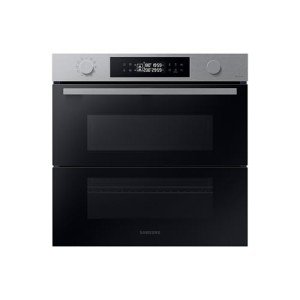The Rise of Built-In Ovens: A Seamless Approach to Modern Cooking
In modern kitchen areas, where design aesthetics mix seamlessly with performance, one home appliance stands apart as a true game changer: the built-in oven. As house owners and chefs alike continue to seek ingenious services that enhance their cooking experience, built-in ovens have actually ended up being significantly popular. This article checks out the benefits, considerations, and trends surrounding built-in ovens, highlighting why they are an important function in contemporary cooking areas.
What is a Built-In Oven?
A built-in oven is a cooking area appliance designed to be integrated into the cabinetry of a cooking area rather than standing alone. Unlike conventional freestanding ovens, which can be moved and positioned anywhere, built-in ovens been available in various styles and sizes to fit particularly within designated spaces. Readily available in single or double setups, these ovens offer a structured appearance that complements contemporary kitchen area styles.
Benefits of Built-In Ovens
1. Space-Saving Design
One of the most enticing advantages of built-in ovens is their space-saving style. By incorporating the oven into kitchen cabinetry, you can maximize important counter and floor space. This is especially helpful in smaller cooking areas, where optimizing room is essential. Built-in ovens can be installed at eye level, making them more accessible and lowering the requirement to flex down.

2. Visual Appeal
Built-in ovens add to a sleek and cohesive kitchen design. Available in different finishes-- such as stainless steel, black, white, and custom kitchen cabinetry-- they can blend seamlessly into the total decoration. This visual appeal enhances the cooking area's visual harmony and elevates the space, creating a contemporary and advanced environment.
3. Improved Functionality
Many built-in ovens come geared up with sophisticated cooking innovations, such as convection cooking, steam ovens, and clever functions. These improvements permit flexible cooking options, making it easier to achieve professional-level results at home. Smart built-in ovens can even link to Wi-Fi, making it possible for users to control the oven remotely, receive notifications, and access a range of cooking programs and dishes.
4. Enhanced Ventilation
Since built-in ovens can be integrated with cooking area hoods and ventilation systems, they can assist maintain better air quality and reduce cooking odors. This is specifically significant for those who like to cook with aromatic spices and ingredients, as an efficient ventilation system can keep the kitchen area comfy and inviting.
5. Modification Options
Built-in ovens use a large range of personalization choices to suit specific cooking designs and requirements. From professional-grade devices with multiple cooking modes to compact designs for smaller sized kitchen areas, property owners can select the oven that fits their particular requirements. Many manufacturers also provide adjustable front panels, enabling you to match the oven's look to your cabinets for a genuinely combined look.
Considerations When Choosing a Built-In Oven
While built-in ovens have lots of advantages, there are very important factors to consider to remember before making a purchase:
1. Cost
Built-in ovens typically come with a higher cost than their freestanding equivalents due to their design and setup requirements. It's crucial to aspect in both the expense of the oven and any additional expenses connected to cabinetry adjustments or installation.
2. Installation Requirements
Installing a built-in oven often needs professional help, especially if you need to modify existing cabinetry. Make sure that you consider any expenses connected with installation, including labor and potential kitchen cabinetry changes.
3. Size and Dimensions
Before acquiring a built-in oven, determine the designated area precisely to ensure a correct fit. Built-in ovens can be found in different sizes and configurations, so picking one that aligns with your requirements and cooking area style is important.
4. Way of life and Usage
Consider your cooking habits and needs when choosing a built-in oven. If you often host big events, a double oven may be more advantageous. On the other hand, if you have a compact kitchen area, a single-wall oven may be adequate.
Patterns in Built-In Ovens
The kitchen device market is continually progressing, and built-in ovens are not exempt from emerging trends. Some current patterns consist of:
Smart Technology Integration: With the increase of wise home technology, built-in ovens now often feature connection alternatives. This enables users to keep track of cooking progress and change settings via mobile apps.
Energy Efficiency: As sustainability ends up being a concern, lots of manufacturers are purchasing energy-efficient built-in ovens that reduce energy consumption while maintaining performance.
Multi-functional Designs: Built-in ovens now use features such as air frying, slow cooking, and steaming, providing flexibility that meets a broad range of cooking techniques.
Conclusion
Built-in ovens certainly represent an ideal blend of design, function, and convenience in today's cooking areas. As more house owners opt for this modern option, the focus shifts to developing a cooking area that is as aesthetically pleasing as it is practical. Whether built in ovens are constructing a new home or renovating your cooking area, considering a built-in oven might raise your culinary experience and transform your kitchen into an elegant and functional haven. With a range of choices readily available and ongoing developments in technology, built-in ovens stay a standout choice for both amateur cooks and cooking enthusiasts alike.
